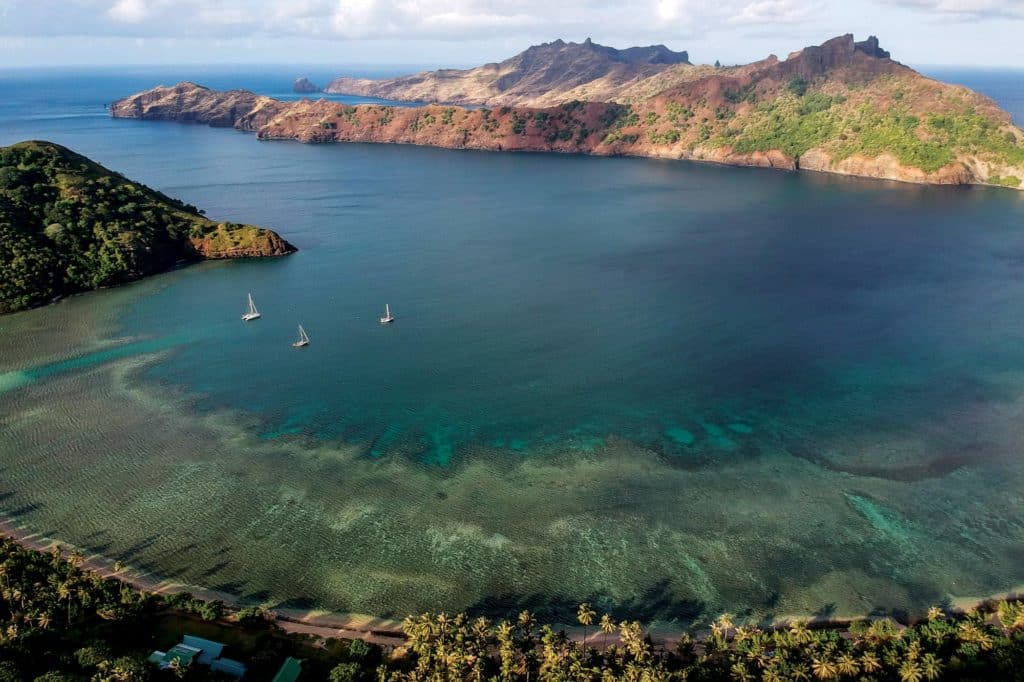
Verdant mountains plunging into a blue sea, dark basalt spires piercing the clouds, jungle vines growing over stone ruins: the Marquesas Islands of French Polynesia have an almost mystical aura about them. At the far eastern end of the South Pacific islands, only 9 to 10 degrees south of the equator, they are remote, hot and humid. They are high islands, volcanoes that have eroded into deep valleys and vertiginous ridges. In some ways, they are the ultimate South Seas idyll: secluded, tropical and ruggedly beautiful. But in other ways, they are far from the postcard picture. Because of their geological newness and because they are on the outer edges of the cold Humboldt Current, the islands have not developed extensive barrier reefs. So they don’t have the lagoons and consequent calm, protected bays that many other Pacific islands boast.
For sailors, this means anchorages exposed to the rolling ocean swell. Even though one finds protection from the strong southeasterly trade winds on the leeward sides of these islands, the swell inevitably rolls its way in. Most sailors don’t consider this a problem. After all, to reach the Marquesas, most voyagers have spent three weeks to a month sailing across the open ocean, in swells much bigger than what one encounters in the islands’ leeward anchorages; we’re acclimated to the motion and hardly notice it. But the fact remains that there is nothing so peaceful as a flat-calm anchorage, sheltered on all sides—especially after a long ocean passage.
Enter Anaho Bay. On the north (leeward) coast of Nuku Hiva lies this beautiful, calm bay, encircled by hills and headed by a bare basalt peak. In all but a north wind, it is perfectly protected. The necklace of beach ashore is soft, white sand, and there’s even a coral reef (a rarity in these islands) that’s built itself along the edges of the bay, home to the colorful and often unique reef fish of the Marquesas.
Read More: Lessons from the Sixth Circumnavigation
There are no roads into Anaho Bay. One can reach the place only by boat, or on foot or horseback along the trail that leads across a little mountain pass to the neighboring village of Hatiheu. The only sounds in the bay are the quiet lapping of water on the beach, the rustle of wind in the trees, the splash of a fish, and the thunk-thunk of the locals cutting copra. A few people do live in Anaho Bay, fishing, farming, and even running a small restaurant for sailors and any other tourists who hike over from Hatiheu. At the time of the lockdown, when the Nuku Hiva government was ordering cruisers to sail to the main town of Taiohae (where the police could more easily keep them under surveillance), the locals in Anaho Bay refused to let their cruisers be taken away. Those at anchor there at the time had been helping the locals with all kinds of projects on their houses and fishing boats. So the lucky sailors stayed in Anaho for the whole lockdown. While I wasn’t among them, I was thrilled to hear the story after the fact, a wonderful instance of the mutual generosity of visiting cruisers and their local hosts. That, even more than the stunning scenery, is what makes the South Seas such a special place.








